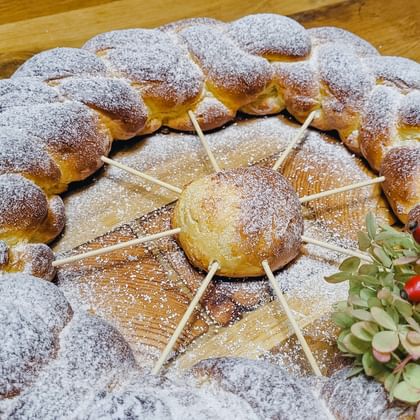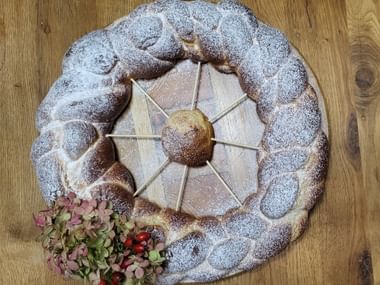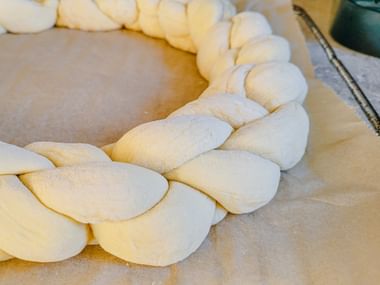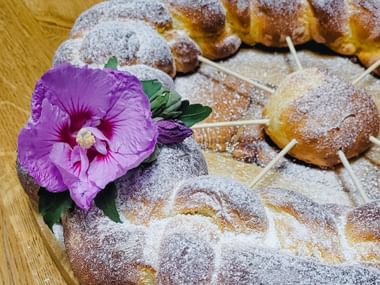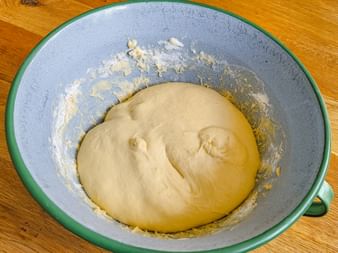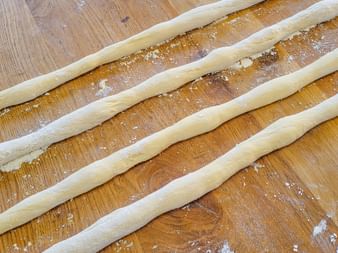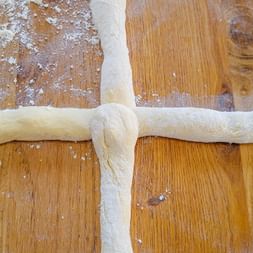The Ingredients for a Striezel:
- 500 g wheat flour (Type 700)
- 175 g milk
- 100 g butter
- 90 g sugar
- 50 g yeast
- 5 g salt
- 5 g malt powder
- 2 1/2 egg yolks
- 75 g raisins
- Flavorings: vanilla & lemon
The dough can be mixed either with a wooden spoon or with a mixer. Combine all the ingredients in a bowl and mix until the dough pulls away from the sides of the bowl. Add the raisins at the end and then knead the dough thoroughly again.
Cover the dough and let it rest in a warm place for at least 20 minutes to allow it to rise. Knead the dough again and divide it into up to six equal pieces. After a short 10-minute break, you can start shaping the pieces.
Shape the pieces of dough by rolling them with your hands on a floured surface until they are smooth and round. Next, roll each into an elongated strand, then begin braiding the Striezel.
After braiding, it's time for the proofing period, which is when the yeast develops. Allow the dough to rest in a warm, humid environment for about 40 minutes.
Before baking, brush the Striezel with egg yolk. Bake it in a convection oven at 180 °C, gradually reducing the temperature to 150 °C, for about 30 minutes. The Striezel is done when the outside is golden yellow, and the braid knots are no longer white. Additionally, you can test with a clean metal skewer; if no dough remains on the skewer, then the center is also fully baked.
Depending on the region and individual preferences, you might find dried fruits added to the dough, or the Striezel beautifully topped with pearl sugar and/or almonds. Every grandmother or beloved aunt has her treasured recipe for a fluffy Striezel, lovingly passed down through generations.
Have fun baking!

